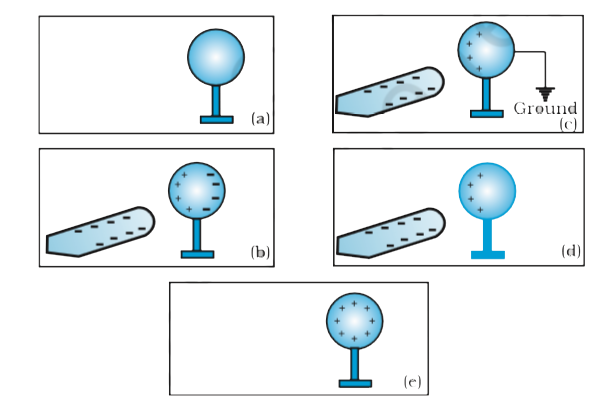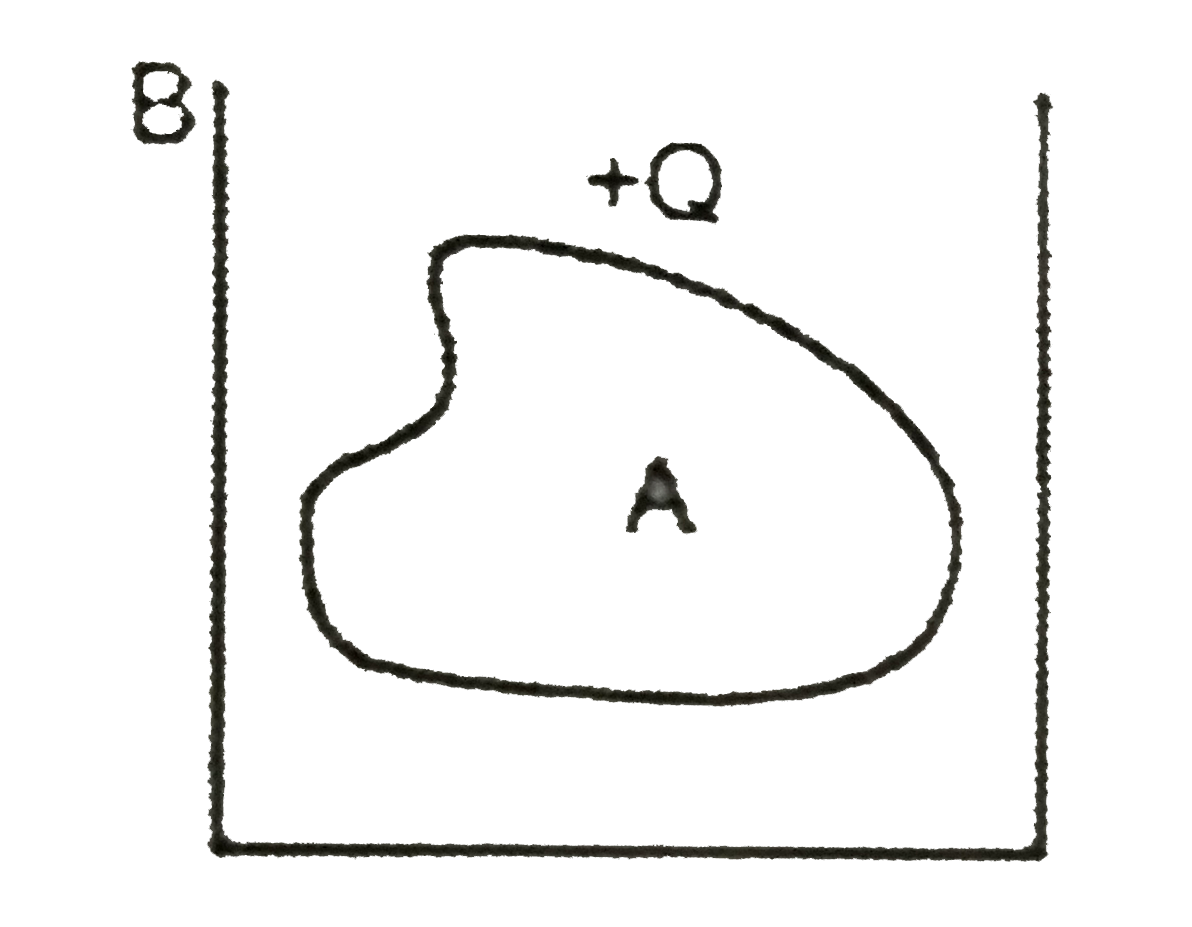How can you charge a metal sphere negatively without touching it?
Video Solution
Text Solution
Figure 1.5(a) shows an uncharged metallic sphere on an insulating metal stand. Bring a negatively charged rod close to the metallic sphere, as shown in Fig. 1.5(b). As the rod is brought close to the sphere, the free electrons in the sphere move away due to repulsion and start piling up at the farther end. The near end becomes positively charged due to deficit of electrons. This process of charge distribution stops when the net force on the free electrons inside the metal is zero. Connect the sphere to the ground by a conducting wire. The electrons will flow to the ground while the positive charges at the near end will remain held there due to the attractive force of the negative charges on the rod, as shown in Fig. 1.5(c). Disconnect the sphere from the ground. The positive charge continues to be held at the near end [Fig. 1.5(d)]. Remove the electrified rod. The positive charge will spread uniformly over the sphere as shown in Fig. 1.5(e).

In this experiment, the metal sphere gets charged by the process of induction and the rod does not lose any of its charge. Similar steps are involved in charging a metal sphere negatively by induction, by bringing a positively charged rod near it. In this case the electrons will flow from the ground to the sphere when the sphere is connected to the ground with a wire. Can you explain why.
|
Updated on:21/07/2023
Topper's Solved these Questions
- BOOK - NCERTCHAPTER - ELECTRIC CHARGES AND FIELDSEXERCISE - EXERCISE34videos
ELECTRIC CHARGES AND FIELDS
- BOOK - NCERTCHAPTER - DUAL NATURE OF RADIATION AND MATTEREXERCISE - Exercise37videos
DUAL NATURE OF RADIATION AND MATTER
- BOOK - NCERTCHAPTER - ELECTROMAGNETIC INDUCTIONEXERCISE - Exercise17videos
ELECTROMAGNETIC INDUCTION
Similar Questions
Knowledge Check
- Question 1 - Select One
There is a metal object A connected to the earth with the help of a connecting wire. A positively charged object B is brought nearer to A without touching it Which of the following statement is correct?
AElectrons will flow from A to earthBElectrons will flow from earth to ACCharge will be induced on A but there is no transfer of charge from or towards the earthDNone - Question 2 - Select One or More

A conductor A is given a charge of amount +Q and then placed inside a deep metal can B, without touching itAThe potential of A does not change when it is placed inside B.BIf B is earthed +Q, amount of charge flows from it inot the earth.CIf B is earthed, the potential of A is reduced.DEigther (b) or (c) are true, or both are true only if the outer surface of B is connected to the earth andnot its inner surface. - Question 3 - Select One
Two isolated metal spheres are identical. They are electrically neutral and are touching. An electrically charged rod is then brought near the spheres without touching them, as the drawing shows. After a while, with the rod held in place, the spheres are separated, and teh rod is then removed. The following statements refere to the mases mA and mB of the spheres after they are separated and the rod is removed. Which of the follownig statements is true?
 AmA=mBBmA>mB if the rod is positiveCmA>mB if the rod is negativeDmA>mB irrespective of the charge (+ve or -ve) on the rod
AmA=mBBmA>mB if the rod is positiveCmA>mB if the rod is negativeDmA>mB irrespective of the charge (+ve or -ve) on the rod
How can we charge two metallic spheres with equal and opposite charge using the method of induction?
View Solution(a) How will you distinguish between convex lens and concave lense without touching them?
(b) Linear magnification of a concave lens is always positive, whereas that of a convex lens can be both, positive or negative . Why?View SolutionMetal sol is negatively charged.
View SolutionHow can you tell if an electroscope is positively or negatively charged?
View SolutionHow can you distinguish between a plane mirror, a concave mirror and a convex mirror without touching them?
View Solution

